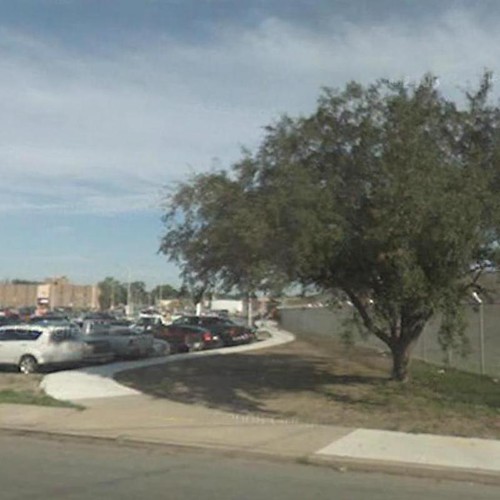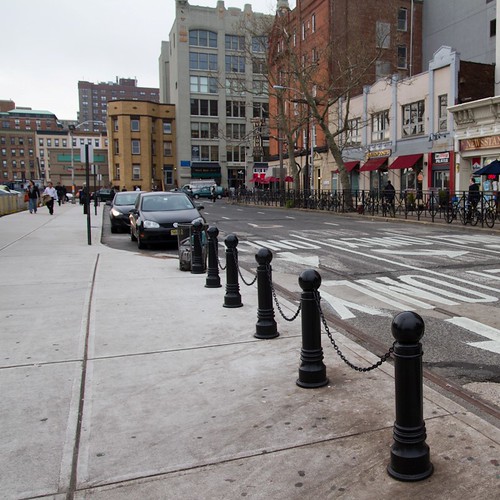The New Jersey Department of Transportation’s (NJDOT) Safe Streets to Transit (SSTT) program was introduced in 2006 as an important component of the Pedestrian Safety Initiative by then Governor Jon Corzine. The program provides $5 million as a means to provide funding to counties and municipalities with transit facilities in need of improvement and accessibility upgrades. The program seeks to encourage transit users to walk, thereby leaving their cars at home and reducing the number of short trips (less than one half mile) being made unnecessarily by daily commuters. Current funding for the program has been reduced to $500,000 for fiscal year 2012, but grants will continue to be awarded to counties and municipalities who apply through the System for Administering Grants Electronically (SAGE) on the NJDOT website. For more information on the program click the “Read more” link to find out more about the program!
According to the Safe Streets to Transit Handbook prepared by NJDOT, SSTT encourages the integration of walking into the public transportation system by focusing on conditions for pedestrians within a half mile radius of a transit stop. It provides communities the opportunity to invest in projects that encourage walking to transit and improve safety for pedestrians who rely on walking as their main form of transportation. SSTT also seeks to improve conditions for the mobility impaired by providing funds for ADA improvements at these locations. Several types of projects are funded through the program. These include:
- Intersection safety improvements that eliminate pedestrian barriers
- New sidewalks, curb ramps, sidewalk widening, and major reconstruction
- Safety enhancements for pedestrian access to transit stops
- Traffic control devices that benefit pedestrians
- Traffic calming measures
- Pedestrian signals and push buttons at key intersections
- Pedestrian oriented lighting
- Major sidewalk reconstruction
Project related costs may include activities such as construction, construction testing, and materials testing. Additional costs associated with preliminary and final design are also eligible for municipalities that are identified Urban Aid Communities or Depressed Rural Centers. However, projects that involve education and enforcement efforts, purchase of bus stop shelters, planning, and routine maintenance of facilities are ineligible for funding under the program. These projects are typically funded by other programs at NJDOT. A complete list of ineligible projects can be found in the SSTT Handbook.
Applications to receive funding from SSTT can be submitted by counties or municipalities through SAGE (System for Administering Grants Electronically), and are reviewed and rated accordingly by the SSTT Review Committee. The Committee is made up of NJDOT and NJTRANSIT representatives, who forward recommendations to the Commissioner of Transportation for final approval. Each application is subject to the following criteria:
- Proximity to transit facility
- Improved safety
- Increased accessibility
- Access to schools
- Pedestrian incidents
- Special designated areas
- Readiness to construct
- Local priority
- Matching funds
- Prior initiatives
- Collaboration
- Applicant’s past performance
A thorough explanation of each criterion is provided in the SSTT Handbook.
All applicants must follow design guidelines set forth in the 2004 American Association of State Highway and Transportation Officials (AASHTO), Guide for the Design and Operation of Pedestrian Facilities (Green Book), the Manual on Uniform Traffic Control Devices (MUTCD), and the NJDOT Roadway Design Manual. NJDOT’s Planning, Design, and Operation of Pedestrian Facilities Guidebook, also provides additional guidance for design. All projects must be prepared in accordance with Title II of the Americans with Disabilities Act of 1990 (ADA) and with Section 504 of the Rehabilitation Act of 1973. For more information on ADA requirements, click here.
Grants from the program have been distributed over the past 5 years, with initial grants having been awarded to fifteen municipalities in December 2008. Significant pedestrian safety improvements that included traffic calming, sidewalk/curb improvements, or access improvements received awards that varied from approximately $27,000 to $275,000. Specific examples include an award to the City of Camden, of $170,000 to improve pedestrian access to one station that serves both the PATCO High-Speedline and the NJ Transit RiverLINE. Similarly, the City of Hoboken received and award of $80,000 to improve pedestrian safety on Hudson Place, which is located near both NJ Transit and Port Authority of NY/NJ facilities.
[column size=half position=first]

Sidewalk improvements at Ferry Ave PATCO Station
[/column]
[column size=half position=last]

Sidewalk improvements on Hudson Place in Hoboken
[/column]
Many other municipalities and counties throughout New Jersey have benefited from the SSTT grants since the first round of awards in 2008. In 2011 Galloway Township and the City of Linwood were awarded SSTT grants to complete gaps in the sidewalk along popularly traveled sections of roadway providing access to local NJ Transit bus stops. In many cases, these gaps in the sidewalk system were the result of scattered development where contractors have only been required to install sidewalks along the development frontage. Often, these gaps in the sidewalk network are not “filled in” until development occurs, but local officials are beginning to see the importance of pedestrian accommodations, not only for access to transit users but for access throughout their towns. As quoted in Shore News Today, Linwood City Councilman, Matt Levinson stated, “The main reason [for the improvements] is for transit users and commuters, so people can walk to the bus, but it really benefits the city too because that road needed sidewalks badly.”
Despite a drop in funding for fiscal year 2012, the New Jersey Department of Transportation remains dedicated to the improvement of pedestrian facilities across the state. For more information on how to apply for Local Aid please contact the NJ Bicycle and Pedestrian Resource Center at bikeped@ejb.rutgers.edu.
